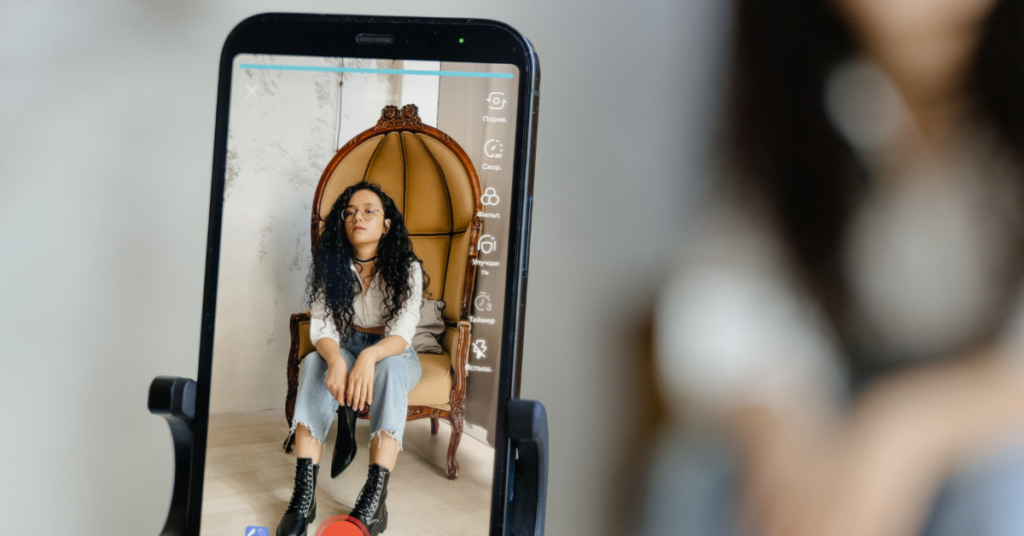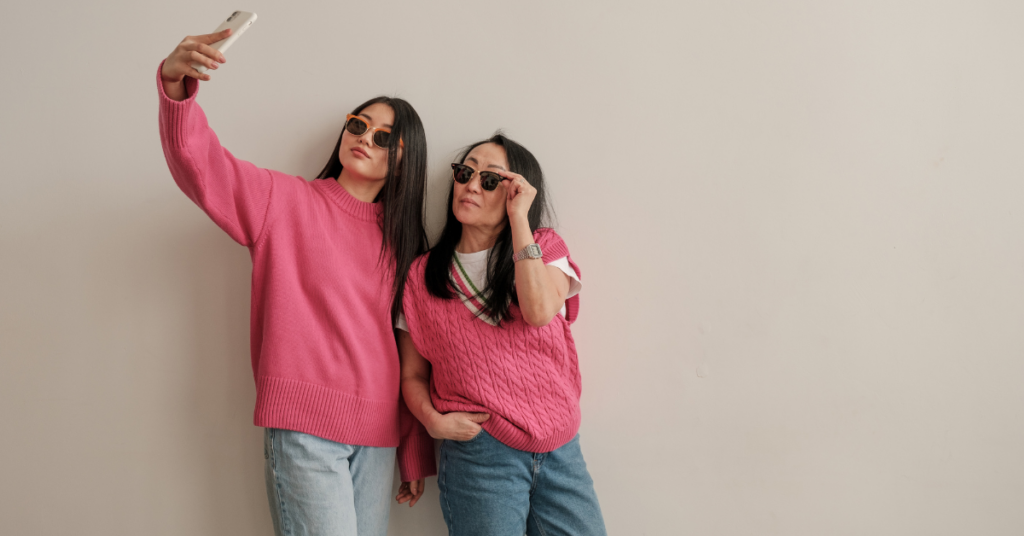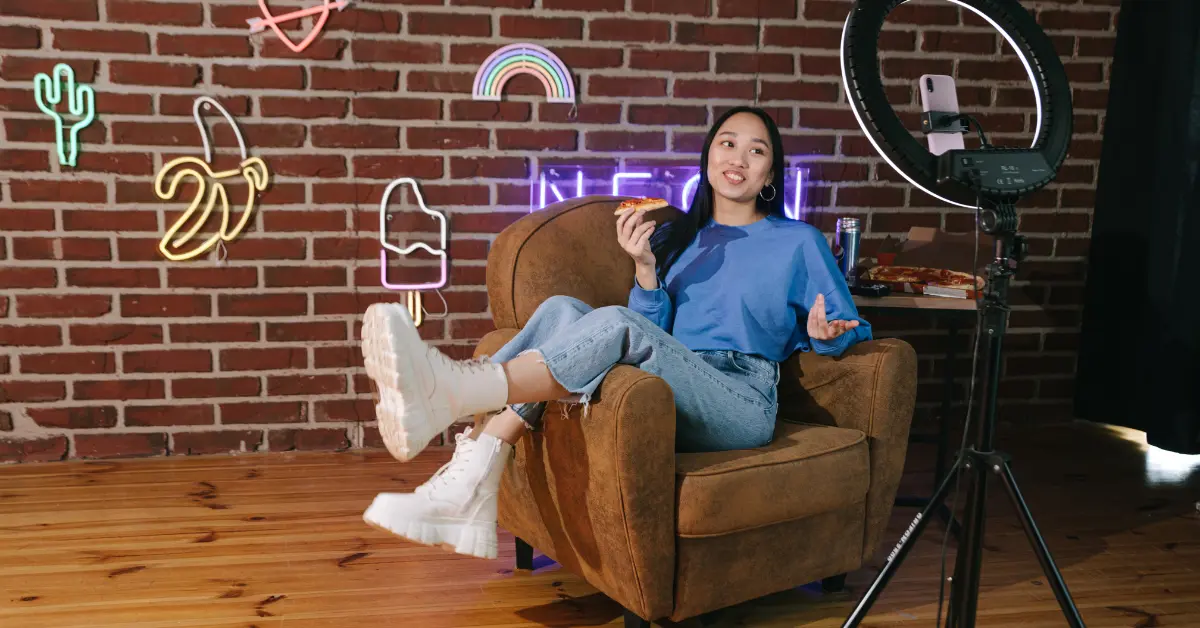In the vast and vibrant world of fashion, storytelling emerges not just as a marketing tool but as an essential thread that weaves through the fabric of brand identity and consumer experience. The concept of fashion storytelling transcends mere product presentation, transforming how brands connect with their audience. By sharing stories, fashion brands invite consumers into a universe where every garment or accessory is not just an item, but a narrative piece of a larger tale. This approach does more than sell products; it enriches the shopping experience, making it memorable and deeply personal.

The Benefits of Fashion Storytelling
Boosting Engagement
When consumers encounter a story that resonates with them—whether it’s about the inspiration behind a collection, the craftsmanship of a garment, or the journey of a piece from concept to completion—they feel a deeper connection to the brand. This emotional engagement is crucial in the digital era, where consumers are seeking more than just transactions; they are looking for experiences that reflect their values and aspirations. Storytelling transforms passive viewers into engaged participants, compelling them to invest not just their money, but their loyalty and enthusiasm into the brand.
Distinct Brand Identity
Fashion storytelling for brands plays a vital role in defining and distinguishing their identity in a saturated market. Through storytelling, brands can highlight their unique selling propositions—be it their commitment to sustainability, their heritage, or their innovative designs—in a way that captivates and retains consumer interest. A well-crafted narrative serves as a brand’s signature, making it recognizable and memorable. By consistently sharing stories that align with their core values and aesthetics, fashion brands can carve out a niche for themselves, making it easier for consumers to identify with them and choose them over competitors.
Customer Loyalty
The integration of compelling narratives into a brand’s marketing strategy significantly enhances customer loyalty. This sense of belonging and loyalty is not easily swayed by price or convenience, making storytelling a powerful tool in cultivating a devoted customer base. Moreover, loyal customers are more likely to share their positive experiences and stories associated with a brand, further amplifying its reach and impact through word-of-mouth.
Conversion Rates
Ultimately, the goal of incorporating storytelling in online fashion is not just to entertain but to convert interest into action. Engaging stories can significantly increase conversion rates by guiding potential customers through a curated journey that culminates in the desire to purchase. This method encourages consumers to envision the products in their own lives, therefore reducing the psychological distance between interest and purchase.
Key Fashion Storytelling Techniques
Narrative-Driven Product Descriptions
To stand out in the crowded e-commerce landscape, fashion brands must embrace fashion storytelling techniques that captivate their audience. One effective approach is creating narrative-driven product descriptions. These go beyond the basic details of fabric and fit to weave a story about the item’s origin, inspiration, or the experience it aims to deliver to the wearer. By imbuing product descriptions with a sense of story-driven fashion, brands can transform mundane shopping tasks into immersive experiences.
Offering Behind-the-Scenes Insights
Offering behind-the-scenes insights is a powerful storytelling technique that satisfies this desire. By pulling back the curtain on the design process, the selection of materials, or the craftsmanship involved in creating a piece, fashion brands can foster a deeper appreciation for their products. This transparency not only explains the production process but also highlights the brand’s commitment to quality and ethical practices, further strengthening consumer trust and engagement.
Conducting Designer Interviews
Designer interviews are an excellent medium for fashion storytelling on social media and other platforms. These interviews can offer a unique glimpse into the creative minds behind the collections, sharing their challenges and visions. By humanizing the brand and allowing designers to share their stories directly with consumers, these interviews create a personal link.
Sharing Inspiring Customer Stories
Encouraging customers to share their experiences, how they style pieces, or what those items mean to them, can provide authentic and relatable content that resonates with a wider audience. These stories highlight the versatility and significance of the products in diverse contexts, reinforcing the brand’s relevance in the everyday lives of its customers.
Developing a Fashion Storytelling Strategy
Understanding Your Target Audience
To genuinely connect with and captivate your target audience in the fashion e-commerce space, a deep understanding of their preferences, behaviors, and needs is essential. It’s about getting into the minds and hearts of your potential customers, anticipating their desires, and meeting them with solutions that resonate on a personal level. Here’s a structured approach to achieving this deep level of understanding:
Conduct Market Research: The first step in understanding your target audience involves collecting and analyzing data. This can be achieved through various methods, including surveys, focus groups, and the analysis of social media analytics. These tools can provide you with a wealth of information about what your audience likes, dislikes, and expects from your brand. Market research helps you identify not just the broad trends but also the nuanced preferences that can guide your product selection, marketing messages, and overall brand positioning.
Create Buyer Personas: Once you’ve gathered data, the next step is to synthesize this information into detailed buyer personas. These personas are fictional representations of your ideal customers, including demographics such as age and income, as well as psychographics like lifestyle, fashion preferences, and shopping habits. Creating these personas helps you visualize who you’re selling to, allowing you to tailor your marketing efforts and product offerings more effectively. It’s like having a cheat sheet that tells you exactly who your audience is and how to engage them.
Analyze Engagement: Paying attention to the types of posts that generate the most likes, comments, and shares can help you understand your audience’s interests and preferences. This analysis is crucial for refining your content strategy, ensuring that you’re producing material that captures attention and encourages interaction, thereby increasing brand visibility and loyalty.
Monitor Trends: In the fast-paced world of fashion, trends come and go with lightning speed. Staying up-to-date on these trends, as well as the broader social conversations happening within the fashion community, is vital. This knowledge allows you to align your offerings and content with what’s currently relevant and resonating with your target audience. By staying current, you position your brand as a thought leader and trendsetter, appealing to the desires of fashion-forward consumers.
Seek Feedback: Lastly, actively seeking feedback from your customers is a direct and effective way to measure how well your products and storytelling efforts are meeting their needs and expectations. This feedback can be solicited through surveys, direct communication, or social media engagement. It provides you with invaluable insights into areas of success and opportunities for improvement, ensuring that your brand remains responsive and adaptable to your audience’s evolving desires.
Understanding your target audience is a continuous process that demands attentiveness, adaptability, and a willingness to evolve. By following these steps, fashion e-commerce brands can create a more engaging, relevant, and successful interaction with their customers, ultimately leading to a loyal customer base and a strong, resonant brand presence.

Integrating Storytelling Across All Platforms
This means harmonizing your message on your website, social media channels, email marketing, and any other platforms where your brand is present. By presenting a unified narrative across multiple channels, you enhance your brand’s reach and ensure that your audience encounters a cohesive story no matter where they engage with your brand. This strategic integration amplifies your message and fosters a stronger, more unified brand presence online.
Leveraging Social Media for Fashion Storytelling
Utilizing Instagram
Instagram, with its visually driven platform, offers a unique opportunity for fashion brands to engage their audience through compelling visual storytelling. This visual narrative can significantly enhance brand recognition, foster a deeper connection with the audience, and drive engagement. Here’s how to maximize your storytelling impact on Instagram:
Curate a Cohesive Feed: The visual aesthetic of your Instagram feed is often the first impression potential followers or customers will have of your brand. It’s crucial to curate a feed that not only showcases your products but also tells your brand’s story through a consistent color scheme and editing style. This cohesive look helps in creating a visually appealing and instantly recognizable brand identity on the platform. By carefully selecting images that fit your brand’s aesthetic, you can create a compelling visual narrative that entices viewers to explore your content further and engage with your brand.
Leverage Instagram Stories: Instagram Stories offer a dynamic way to connect with your audience through more immediate, ephemeral content. This feature is perfect for sharing behind-the-scenes glimpses, real-time events, or any content that adds a personal touch to your brand. Stories can humanize your brand, showing the faces and processes behind your products, which can foster a stronger, more personal connection with your audience. The interactive elements available in Stories, such as polls, questions, and swipe-up links, also provide an excellent way to engage directly with your followers and gather feedback.
Incorporate User-Generated Content: Sharing content created by your customers can significantly enhance your brand’s authenticity and relatability. When customers post photos and stories of themselves wearing or using your products, it serves as social proof of your brand’s appeal and quality. Featuring this user-generated content on your Instagram account not only acknowledges and appreciates your customers’ loyalty but also encourages others to share their own experiences. This fosters a sense of community and belonging among your followers, centered around shared experiences and styles.
Utilize IGTV and Reels: Instagram’s longer-form video platform, IGTV, and the shorter, more dynamic Reels, offer versatile formats for storytelling. IGTV is ideal for in-depth content, such as designer interviews, detailed looks at production processes, or extended fashion showcases, allowing you to share more comprehensive stories about your brand. On the other hand, Reels can be used for creating short, engaging clips that capture the audience’s attention quickly. This could include trend spotlights, quick styling tips, or fun, creative showcases of your products. Both formats provide unique ways to engage with your audience and enhance your storytelling on Instagram.
Maximizing your storytelling impact on Instagram involves a strategic blend of visual cohesion, personal engagement, community building, and versatile content creation. By utilizing these content strategies for fashion, brands can create a compelling online presence that not only showcases their products but also tells a captivating story that resonates with their audience.
Engaging Audiences on Facebook
With its diverse content formats—posts, live videos, events, and groups—brands have the opportunity to engage with their audience through rich narratives. This platform is ideal for sharing more detailed content, such as long-form videos, detailed posts about your brand’s journey, or events that invite direct interaction with your audience.

Captivating Followers on Pinterest
Pinterest is a visual discovery engine, perfect for capturing the imagination of those looking for fashion inspiration. For fashion brands, it’s a platform to curate collections of inspirational imagery, trend boards, and product pins. By carefully selecting images that reflect your brand’s character and appeal to your target audience’s aspirations, you can use Pinterest to guide potential customers from inspiration to purchase.
The role of fashion branding through storytelling is set to become even more pivotal. As consumers increasingly seek out brands that align with their values and offer more than just products, storytelling will be the key to engaging this new generation of shoppers. Innovations in technology and social media will provide new platforms and formats for storytelling, from immersive virtual reality experiences to interactive social campaigns. The future of fashion marketing lies in the ability to adapt and innovate in storytelling, creating narratives that not only sell products but also inspire, engage, and resonate with a global audience.
